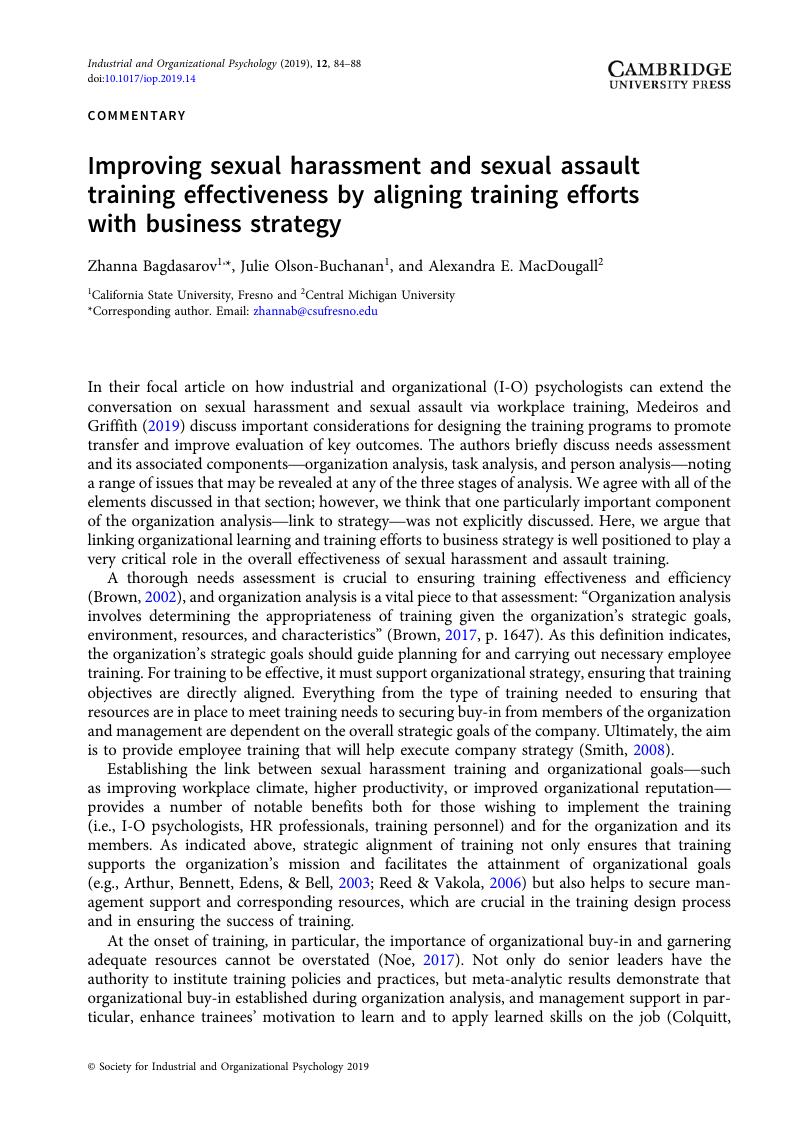Crossref Citations
This article has been cited by the following publications. This list is generated based on data provided by Crossref.
Zelin, Alexandra I.
and
Magley, Vicki J.
2020.
Handbook of Interpersonal Violence and Abuse Across the Lifespan.
p.
1.
Latham, Jillian Anne
2020.
Looking beyond training as a solution to workplace sexual harassment and discrimination.
Industrial and Organizational Psychology,
Vol. 13,
Issue. 2,
p.
168.
Zelin, Alexandra I.
and
Magley, Vicki J.
2022.
Handbook of Interpersonal Violence and Abuse Across the Lifespan.
p.
3941.
Zelin, Alexandra I.
Branda, Brittany
and
Tino, Riley
2022.
How Do You Define Sexual Harassment?: Why Context Matters.
Violence Against Women,
Vol. 28,
Issue. 14,
p.
3438.





